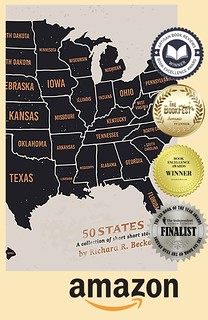
Selective attention, our ability to unconsciously filter visual and audio information, has always been a challenge for advertising. In the last five decades, advertisers have ponied up an increasing amount of ridiculous commercials and guerilla gimmicks in an attempt to win us over, even when they knew the results weren't sustainable.
The concept was simple enough. Whereas 1920s advertising was informational and appealed to rational thought, 1950s advertising shifted the paradigm to make emotional and visceral appeals. By the 1980s, there were so many emotional and visceral appeals, we began to filter them out, prompting advertisers to look for new ways to stand out. You know, like clowns.
Clowns Don't Work So Much Anymore.
Clowns, or "That Guy" as they are sometimes dubbed in social media, are struggling to get our attention. (Or, as I once commented to Seth Godin, purple cows tend to lose their impact in a pasture full of them.) If everyone is a clown, funny noses become commonplace.
While the research was intended to demonstrate how distracting cell phones are, researcher and psychology professor Ira Hyman at Western Washington University in Bellingham, Wash., has helped pinpoint why advertising seems to be losing its luster. He employed a clown to ride a unicycle through campus and tracked the reactions.
Of the 317 pedestrians crossing the main square of the campus, only 25 percent of those using their mobile phones noticed the clown. Fifty-one percent of those people walking alone noticed the clown. Sixty-one percent of the people using music players saw the clown. Seventy-one percent of those who were walking or chatting in groups noticed him.
"When people engage in demanding cognitive tasks, they may not become aware of a variety of stimuli in the environment," he told The Press Association. The phenomenon is called "inattentional blindness". Where it applies to advertising is in consideration of which environment people are more attuned to. It seems mobile content and conversations win.
Clowns, Grapefruit, And Social Media
C. Robert Cargill, writing about the success of the film Paranormal Activity, retold a great Dana Carvey allegory about fame, involving a grapefruit.
If you take an ordinary grapefruit, put it on a pedestal, and then broadcast that pedestal on television 24 hours a day, you would have a star. It doesn't matter if anyone watches the grapefruit; they'd simply see it flipping channels. Take the grapefruit to the mall, put it under glass, and people gather around and whisper “Hey, I think that’s THE grapefruit” before taking their photo moment.
Elaborating on the story, if you televised 100 grapefruit on pedestals 24 hours a day on different channels and then took them to the mall, then people might only say "Oh, there are those grapefruits again," assuming they even noticed them at all.
Recently, Adam Kmiec seemed to struggle with the concept, despite enough experience to know better, as it relates to Chris Brogan. Meaning no disrespect, Brogan is one of THE original grapefruits.
So as more and more grapefruit add themselves to the mix, they just don't seem as interesting, even if they are sweeter, riper, older, or more experienced. Right. The new ones have to differentiate themselves in the marketplace. Or, in other words, you can't be a grapefruit and expect to be noticed anymore. Be something else, while accepting that being a juicer is less sustainable.
































